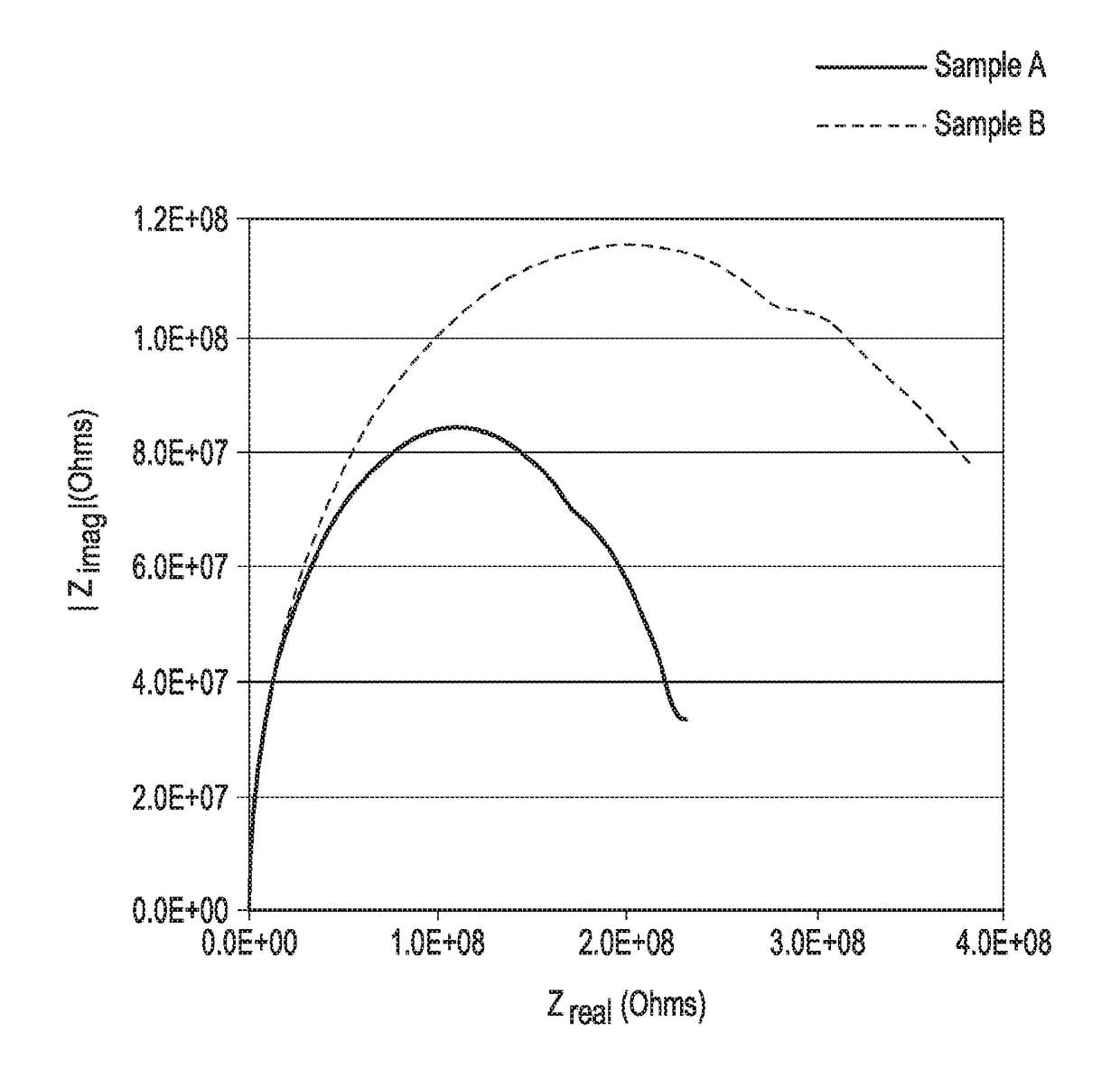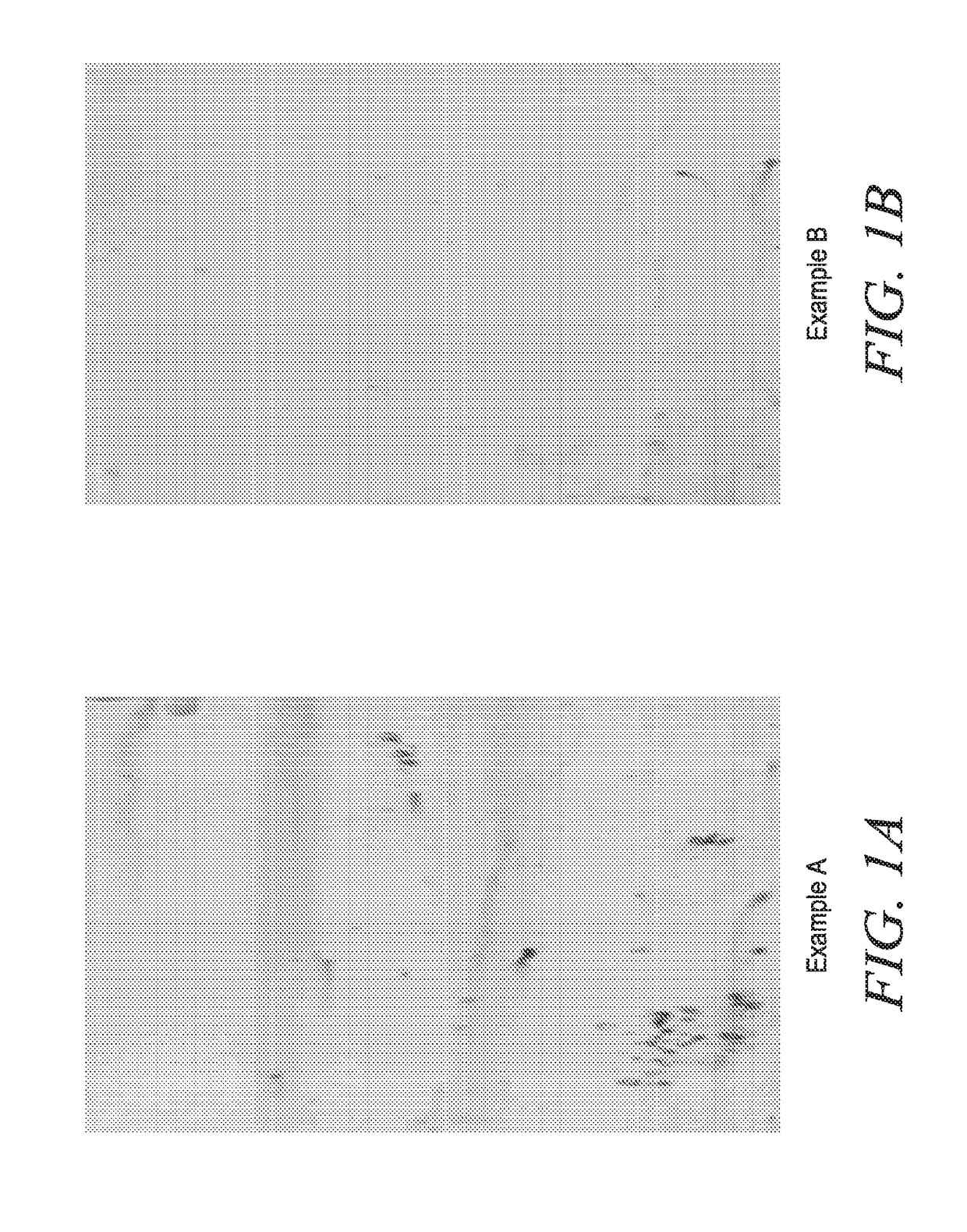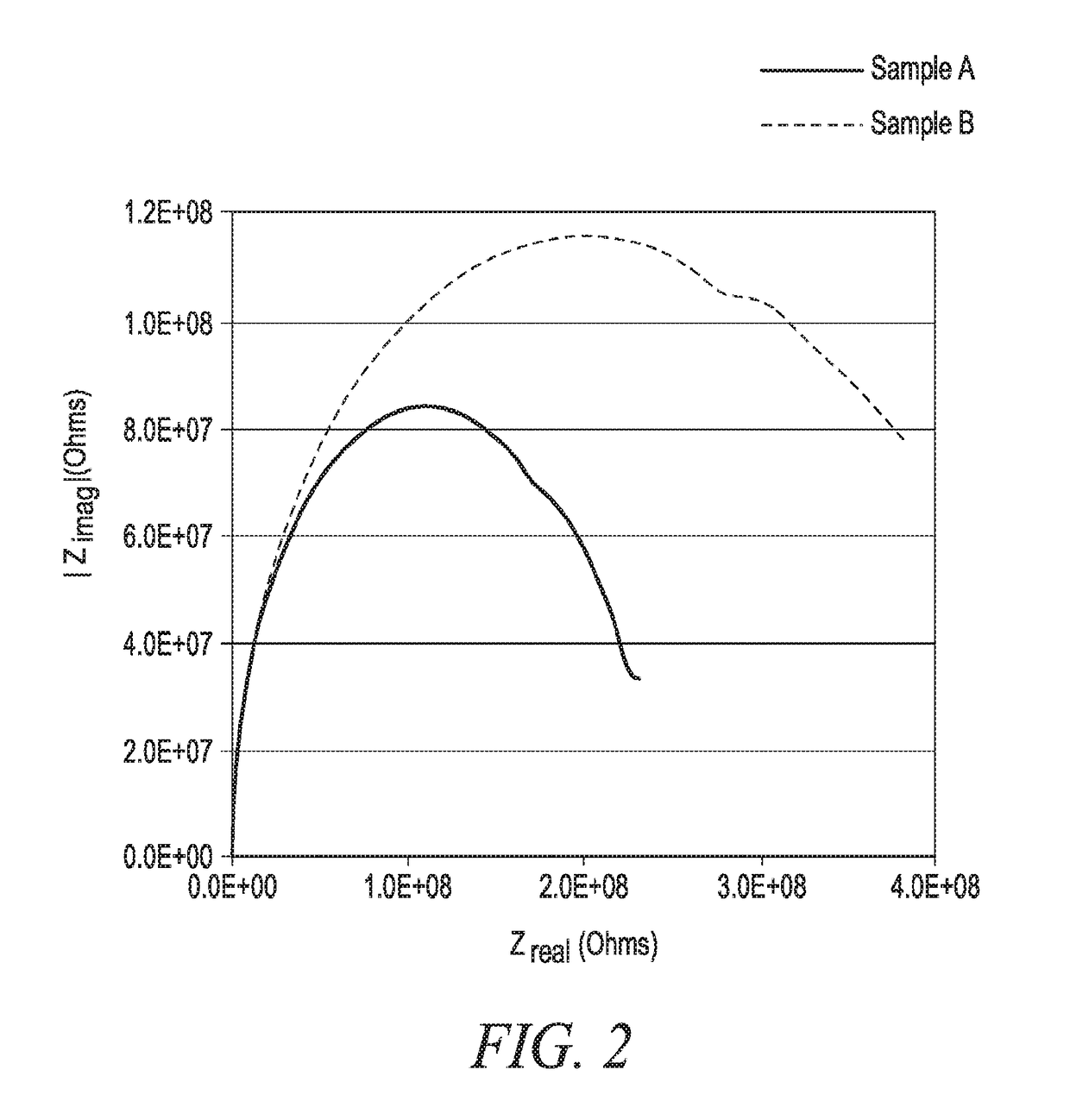Aqueous corrosion resistant coatings with surface-hydrophobic inorganic particles
a technology of inorganic particles and surface hydrophobic coatings, applied in coatings, organic chemistry, chemical instruments and processes, etc., can solve problems such as failure of buildings and bridges, failure of metal equipment, rusting of ships, etc., and achieve the effect of preventing substrate corrosion
- Summary
- Abstract
- Description
- Claims
- Application Information
AI Technical Summary
Benefits of technology
Problems solved by technology
Method used
Image
Examples
example b
[0056]Aqueous Example B Slurry was prepared by mixing Table 2 components by conventional methods.
TABLE 2Composition of Example B Slurry of the Present InventionComponentsWeight (gram)Rutile TiO2 pigment coated97.5with octyltriethoxysilane toform a hydrophobic surfacehaving a mean particle sizeof 0.23 uM.Tamol-1654.8Ammonia (28 wt %)2.5Triton CF-10 or Capstone0.75FS-61Water20Butyl cellosolve55DPM9Maincote HG-54D330Tego Foamex 14881.95Sodium nitrite (15 wt %)4.5
Determination of Anticorrosion Property of Compositions of Examples A and B
[0057]Anticorrosion properties of Aqueous Comparative Example A Slurry and Aqueous Example B Slurry were determined using a Singleton Salt Spray Chamber. The Singleton Salt Spray was used under the following conditions: Condensation Rate: 2 ml. per hour; Humidifier Temperature: 118° F.; Tank Temperature: 95° F.; Solution: 5% Sodium Chloride; Test Duration: 240 hours; and sample edges were coated with candle wax to cover any uncoated metal on the edges. F...
example d
[0060]Aqueous Example D Slurry was prepared by mixing the components in Table 5 by conventional methods.
TABLE 5Components of Example DComponentsWeight (gram)Rutile TiO2 pigment coated390with octyltriethoxysilane toform a hydrophobic surfacehaving a mean particle sizeof 0.23 uM.Tamol-16519Ammonia (28 wt %)5Triton CF-101.5Water35Butyl cellosolve110DPM18Maincote HG-54D660Tego Foamex 14884Sodium nitrite (15 wt %)9
Determination of Anticorrosion of Aqueous Comparative Examples C Slurry and Aqueous Example D Slurry
[0061]Anticorrosion properties of coatings were determined using a Singleton Salt Spray Chamber under the following conditions: Condensation Rate: 2 ml. per hour; Humidifier Temperature: 118° F.; Tank Temperature: 95° F.; Solution: 5% Sodium Chloride; Test Duration: 240 hours; and sample edges were coated with candle wax to cover any uncoated metal on the edges. FIG. 3 shows that Aqueous Example D Slurry including an inorganic pigment having a hydrophobic surface (FIG. 3B) exhibi...
example f
[0063]Aqueous Example F Slurry was prepared by mixing the components in Table 7 by conventional methods.
TABLE 7Components of Example FComponentsWeight (gram)Rutile TiO2 pigment coated with silica and220alumina and then coated withoctyltriethoxysilane to form a hydrophobicsurface having a mean particle size of 0.36 um.Tamol-6819.43Ammonia (28 wt %)2Ammonia (15 wt %)7Surfynol 104DPM4Water102Dowanol DPM16Texanol48.6Maincote HG-31600Tego Foamex 8251ACRYSOL RM-8W2Sodium nitrite (15 wt %)9
Determination of Anticorrosion of Aqueous Comparative Examples E Slurry and Aqueous Example F Slurry
[0064]Anticorrosion properties of coatings were determined using a Singleton Salt Spray Chamber under the following conditions: Condensation Rate: 2 ml. per hour; Humidifier Temperature: 118° F.; Tank Temperature: 95° F.; Solution: 5% Sodium Chloride; Test Duration: 371 hours; and sample edges were coated with candle wax to cover any uncoated metal on the edges. FIG. 4 shows that Aqueous Example F Slurry i...
PUM
| Property | Measurement | Unit |
|---|---|---|
| Percent by mass | aaaaa | aaaaa |
| Electrical resistance | aaaaa | aaaaa |
| Electrical resistance | aaaaa | aaaaa |
Abstract
Description
Claims
Application Information
 Login to View More
Login to View More - R&D
- Intellectual Property
- Life Sciences
- Materials
- Tech Scout
- Unparalleled Data Quality
- Higher Quality Content
- 60% Fewer Hallucinations
Browse by: Latest US Patents, China's latest patents, Technical Efficacy Thesaurus, Application Domain, Technology Topic, Popular Technical Reports.
© 2025 PatSnap. All rights reserved.Legal|Privacy policy|Modern Slavery Act Transparency Statement|Sitemap|About US| Contact US: help@patsnap.com



